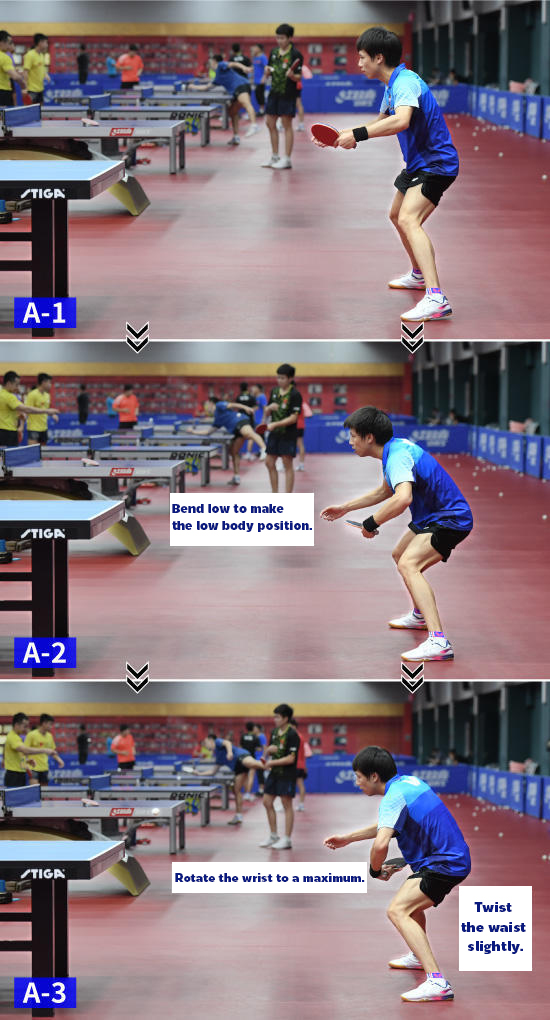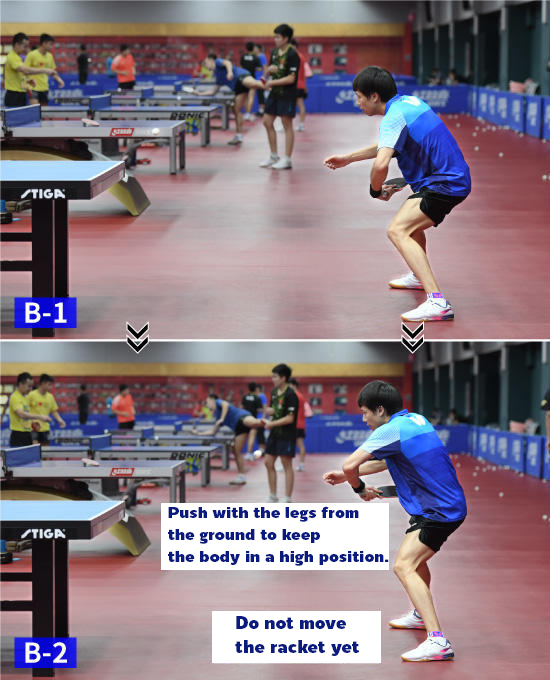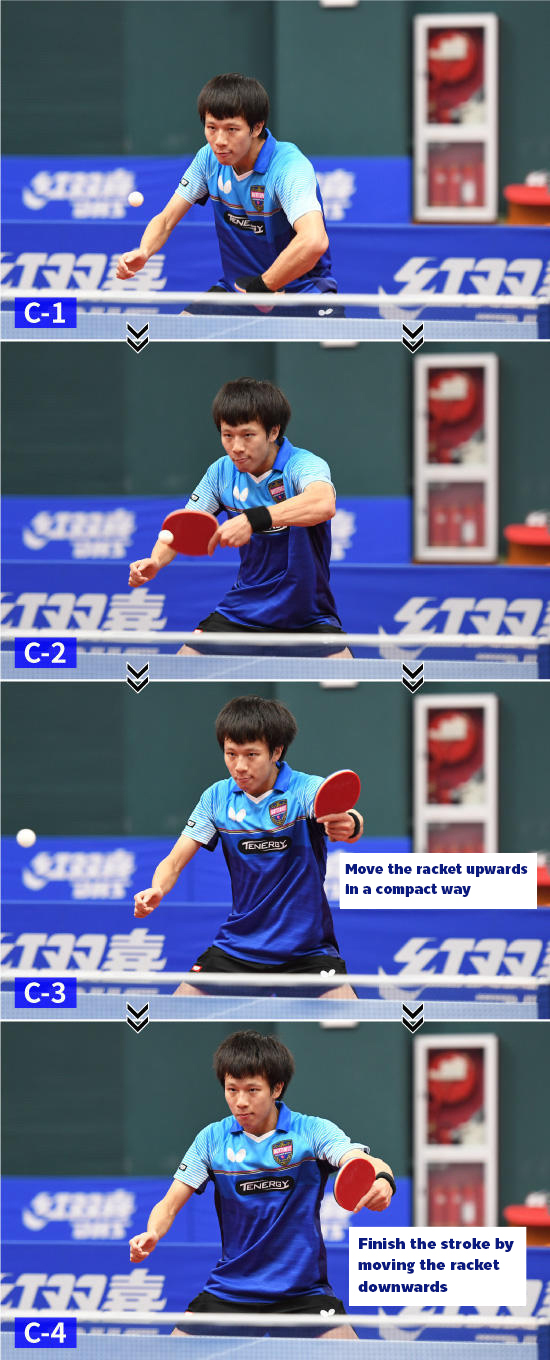Special Programme
Technique of Lin Gaoyuan, a fast attacking left hander
– Consecutive backhand topspin strokes without error at mid-distance –
A Chinese up-and-coming southpaw Lin Gaoyuan,
who is climbing up the world ranking ladder
with his highly stable counter attacking plays close to the table.
This special programme will introduce Lin Gaoyuan’s techniques
with some successive pictures taken at the training camp of the Chinese national team.
The third edition features his backhand topspin at mid-distance.
His big weapon is his backhand topspin close to the table,
but his backhand topspin slightly away from the table or at mid-distance also has considerably high precision.
His backhand topspin at mid-distance is based on his compact racket
movement in anticipation of long rallies ahead.
It is not a power-based fierce attack; this is a good reference
for a Japanese player whose physical size is similar to his.
Point 1: Bend low and turn the waist slightly to generate power.

Let us look at his backswing first (photos A-1 to A-3).
The first thing to note is the transition of his posture.
Lin Gaoyuan creates a low body position by bending his knees and upper body (photo A-2);
this enables him to generate power to move the playing arm strongly
by putting his weight on both his feet.
Another fact to note is that he turns his waist slightly
while pushing his left knee (the right knee for a right-handed player)
forward after bending low (photo A-3). More power can be created
by turning at the waist in unison with the racket arm;
thus creating a low body position at the start of the stroke,
enabling a high degree of momentum.
One important point for an effective backhand topspin stroke
at mid-distance is how you can create the flight distance
and power on the ball; good preparation is crucial. The backswing as a reference;
Lin Gaoyuan thus turns his waist while bending low to create power.
One more fact that can be used as a reference is that he pushes his elbow
forward and rotate his wrist to point the racket head diagonally backwards.
Point 2: Push from the legs to keep the body high before the actual movement begins.

Note his movement to transit from backswing to the stroke (photos B-1 to B-2).
Lin Gaoyuan makes his body high before starting his racket movement;
following the backswing, he is in a low posture
because the position of his racket almost does not change; see photos B-1 and B-2.
The reason for his high body position is for the starting point
of the stroke by pushing from the legs.
The high body position by pushing from the legs before moving arms
makes it easier to efficiently transmit power to the arm from the lower body
(the power generated by pushing from the ground by the legs).
The precision of the stroke is enhanced as the movement of the arm becomes stronger
and more stable if the racket movement begins after starting point.
Just like a long jumper dynamically jumps after a running start,
not from standing still, the set-up position is essential for powerful strokes.
The point to note for his precise backhand topspin from mid-distance
is the start position which enables him to keep his upper body high
by pushing from the legs after preparing in a low position.
Point 3: Complete the stroke by moving the racket compactly












